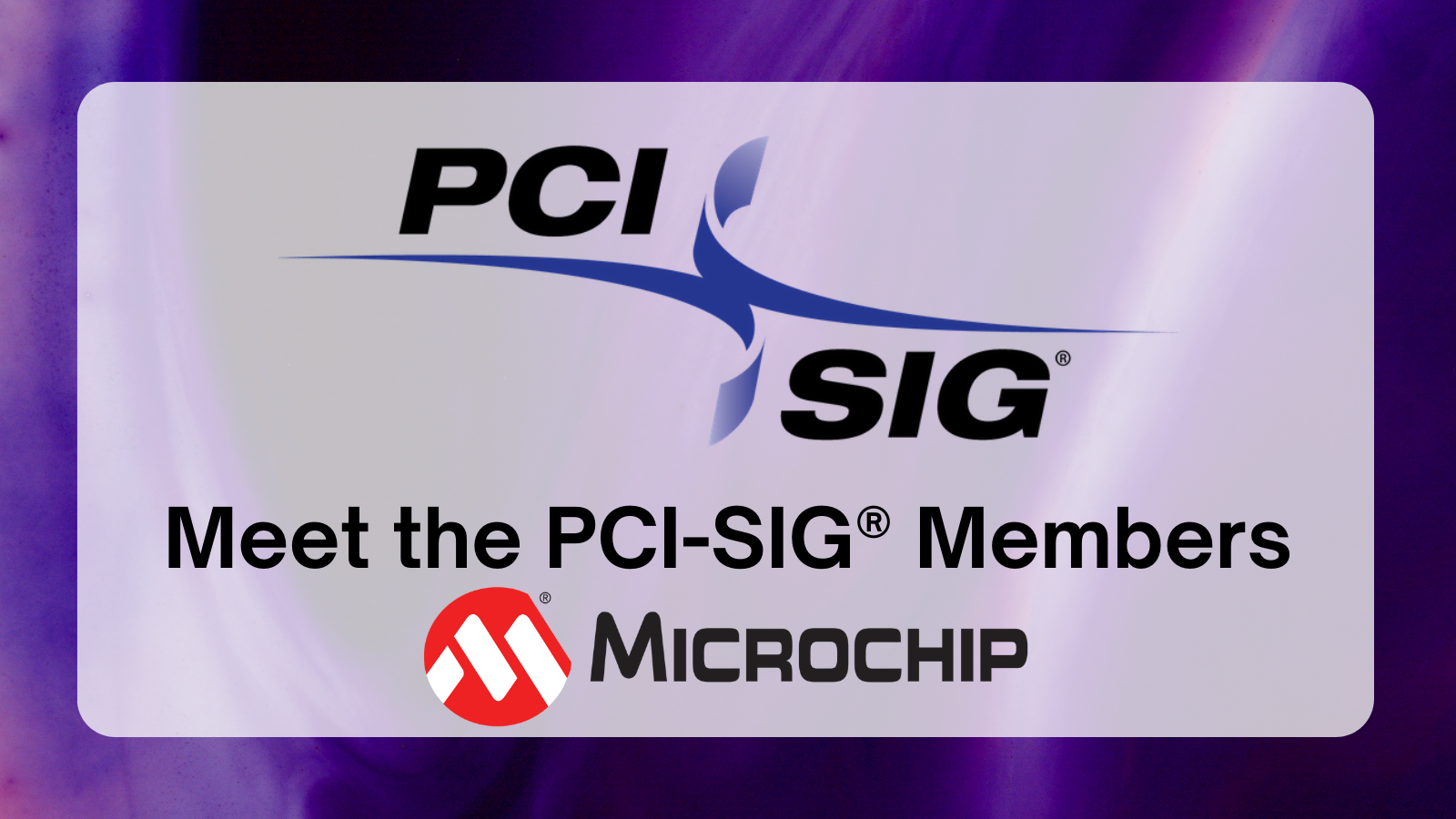Meet the PCI-SIG® Members - Microchip

The “Meet the PCI-SIG® Members” blog series is a way to highlight our diverse global membership that makes PCI-SIG what it is today. PCI-SIG members help to advance and promote PCI Express® (PCIe®) technology innovation in the industry, while receiving a variety of benefits.
In this edition, Timothy Pezarro, Senior Product Manager, Microchip Technology discusses why Microchip participates in PCI-SIG work groups, advantages of membership, and how they utilize PCIe technology in automotive applications.
- Can you provide a brief overview of your company?
Microchip Technology Inc. is a leading provider of smart, connected, and secure embedded control solutions. Its easy-to-use development tools and comprehensive product portfolio enable customers to create optimal designs, which reduces risk while lowering total system cost and time to market. The company provides solutions to customers across the industrial, automotive, consumer, aerospace and defense, communications, and computing markets. Headquartered in Chandler, Arizona, Microchip offers outstanding technical support along with dependable delivery and quality. For more information, visit the Microchip website at www.microchip.com.
- Why did your company join PCI-SIG?
Microchip joined the PCI-SIG as the PCIe standard is vital to many of our products. We wanted to ensure the creation of a robust specification that we can implement to ensure PCIe technology-compliant devices.
- What is the biggest advantage of PCI-SIG membership?
PCI-SIG membership allows Microchip to be on the leading edge of specification development and allows us to influence the specification. In addition, PCI-SIG members are a strong representation of our ecosystem and are either our customers, partners, or suppliers. PCI-SIG participation is critical to build and maintain relationships with key stakeholders within the industry.
- How does your company participate in PCI-SIG?
Microchip is a member of several PCI-SIG workgroups. We review and contribute to specifications, attend, and present at PCI-SIG Developers’ Conferences, and utilize PCI-SIG Compliance Workshops for our product compliance.
- What expertise does your company bring to PCI-SIG?
Microchip is a leading provider of smart, connected, and secure embedded control solutions, serving more than 120,000 customers across many market segments. We bring a profound understanding of both computing and data center architectures and communications protocols to PCI-SIG.
- What does your company see as PCI-SIG’s impact within the industry?
PCI-SIG enables a common I/O interconnect standard, which leads to interoperability for quick development and deployment of products. This common standard enables customers to build larger, more complex, and higher-performance systems while maintaining interoperability.
- Which market segments benefit the most from PCIe technology?
PCIe architecture provides higher data transfer rates than parallel or shared I/O interconnect technologies benefiting applications such as high-performance computing (HPC), cloud computing, enterprise computing, streaming and online gaming. As the industry continues to shift towards advanced technologies, artificial intelligence, machine learning, automotive and aerospace will reap the benefits of higher bandwidth and lower latencies of PCIe technology.
- Which future applications of PCIe technology is your company most looking forward to?
As today’s cars adopt higher levels of automation along the competitive quest for self-driving vehicles, they are influencing the requirement for environmental perception functions or sensors. This in turn drives the demand for high-performance characteristics of PCIe architecture. In addition, self-driving vehicles must incorporate increasingly sophisticated combinations of electronic components: Central Processing Units (CPUs), Electronic Control Units (ECUs), Graphics Processing Units (GPUs), New Acoustic Dimensions (NADs), Systems-on-Chips (SoCs), sensors, accelerators, and storage devices. The architecture and communication between the electronic components must be carefully designed to meet stringent safety, reliability, performance, and latency demands. Packets are used in PCIe technology, along with error checks at multiple layers: transaction, data link and physical. The PCIe hardware offers error-free transactions, making for a reliable transport mechanism and is well suited for mission-critical vehicle applications.
Interested in participating in a future “Meet the PCI-SIG Members” blog? Reach out to pr@pcisig.com for additional details. If you are interested in joining PCI-SIG, learn more about becoming a member on our website.
